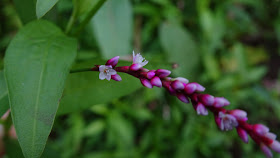The Darebin Parklands landfill has both sources of leachate generation with the majority of water coming into the landfill site via underground aquifer activity and the associated Alphington water table. Leachate is contained and prevented from seeping into the Darebin Creek. Secondly it is treated via aeration and bio-filtration using reed beds and bacteria. Then it is moved through a series of wetlands where it is polished with macrophytes (aquatic plants) through luxury uptake (nutrient removal). Evaporation from wetland areas and sub surface irrigation outside of the landfill site is the main method of disposal.
On average around 350,000 Litres of leachate a week is treated. The main constituent of the leachate is Total Dissolved Solids (TDS), with the most common chemical constituents being phosphates, nitrates, sodium, calcium, chloride and potassium. Heavy metals, tannins and dyes are mostly contaminants at lower levels. The water treatment pond is a great place to catch some stunning reflections, especially on a sunny Autumn's day, as is seen in these photos.
This post is part of the Wednesday Waters meme,
and also part of the Outdoor Wednesday meme,
and also part of the Wordless Wednesday meme.



















































